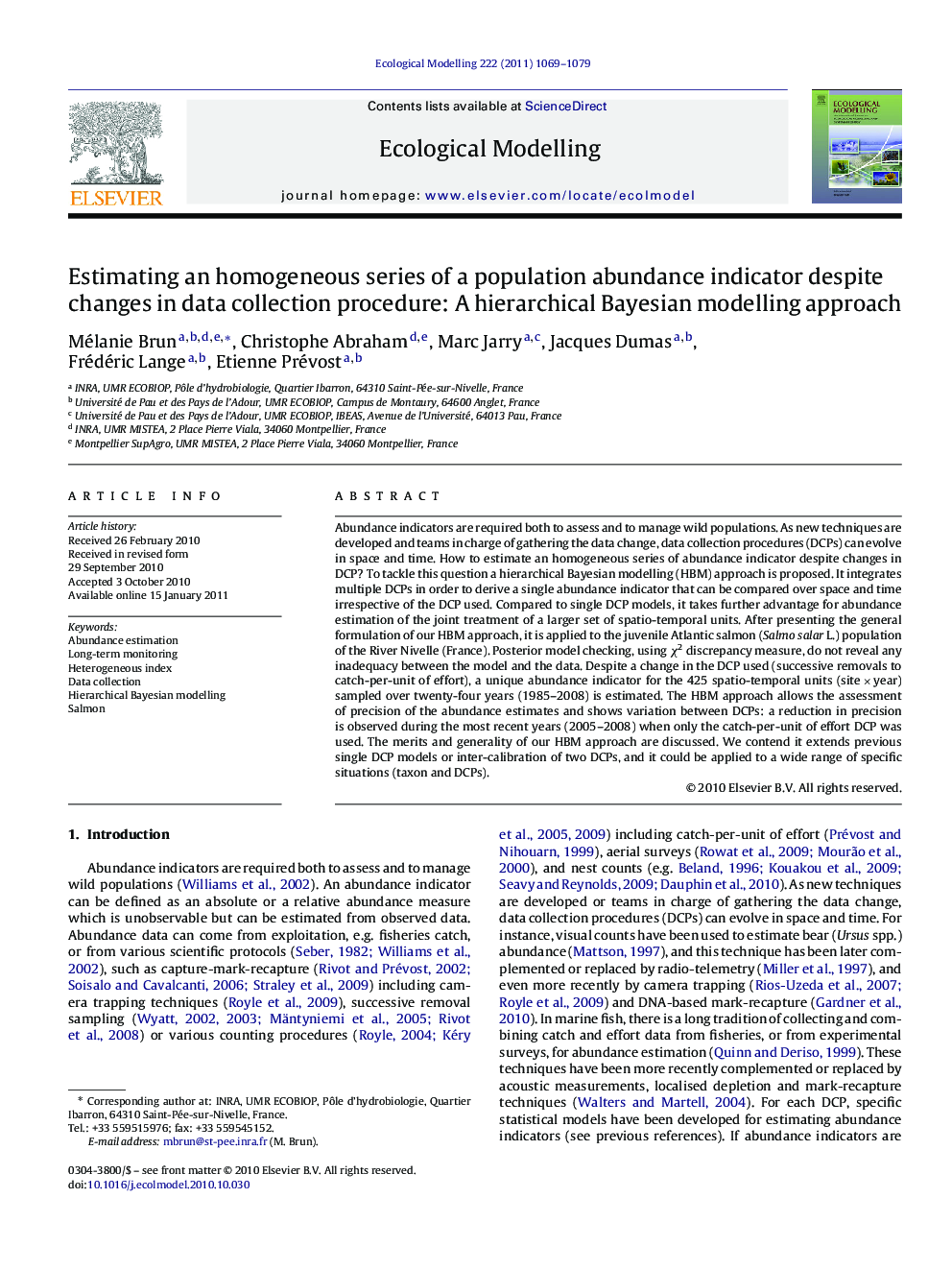| Article ID | Journal | Published Year | Pages | File Type |
|---|---|---|---|---|
| 4377182 | Ecological Modelling | 2011 | 11 Pages |
Abundance indicators are required both to assess and to manage wild populations. As new techniques are developed and teams in charge of gathering the data change, data collection procedures (DCPs) can evolve in space and time. How to estimate an homogeneous series of abundance indicator despite changes in DCP? To tackle this question a hierarchical Bayesian modelling (HBM) approach is proposed. It integrates multiple DCPs in order to derive a single abundance indicator that can be compared over space and time irrespective of the DCP used. Compared to single DCP models, it takes further advantage for abundance estimation of the joint treatment of a larger set of spatio-temporal units. After presenting the general formulation of our HBM approach, it is applied to the juvenile Atlantic salmon (Salmo salar L.) population of the River Nivelle (France). Posterior model checking, using χ2 discrepancy measure, do not reveal any inadequacy between the model and the data. Despite a change in the DCP used (successive removals to catch-per-unit of effort), a unique abundance indicator for the 425 spatio-temporal units (site × year) sampled over twenty-four years (1985–2008) is estimated. The HBM approach allows the assessment of precision of the abundance estimates and shows variation between DCPs: a reduction in precision is observed during the most recent years (2005–2008) when only the catch-per-unit of effort DCP was used. The merits and generality of our HBM approach are discussed. We contend it extends previous single DCP models or inter-calibration of two DCPs, and it could be applied to a wide range of specific situations (taxon and DCPs).
